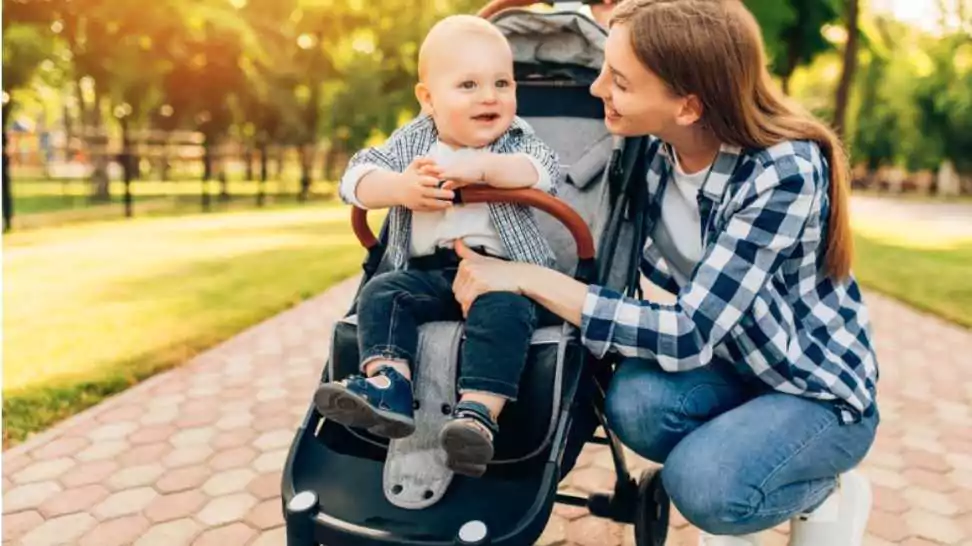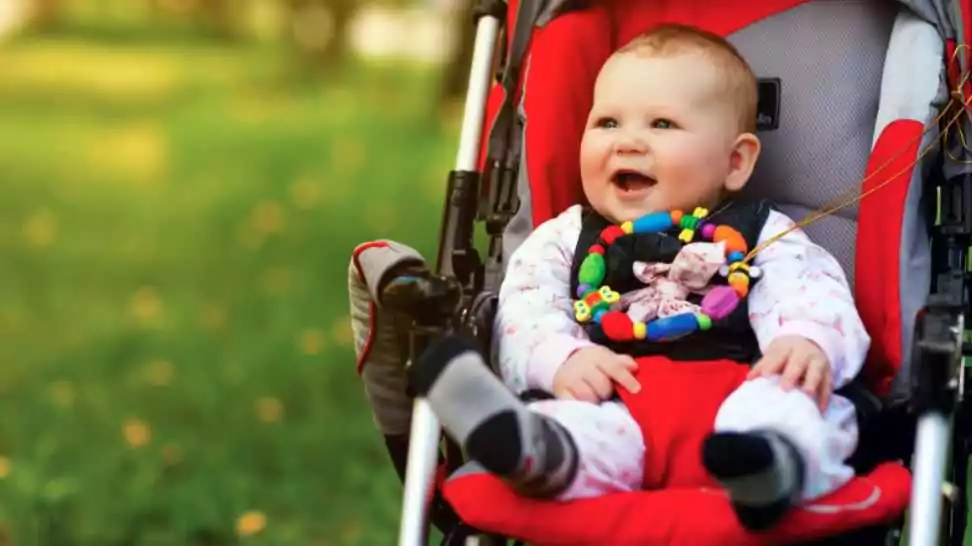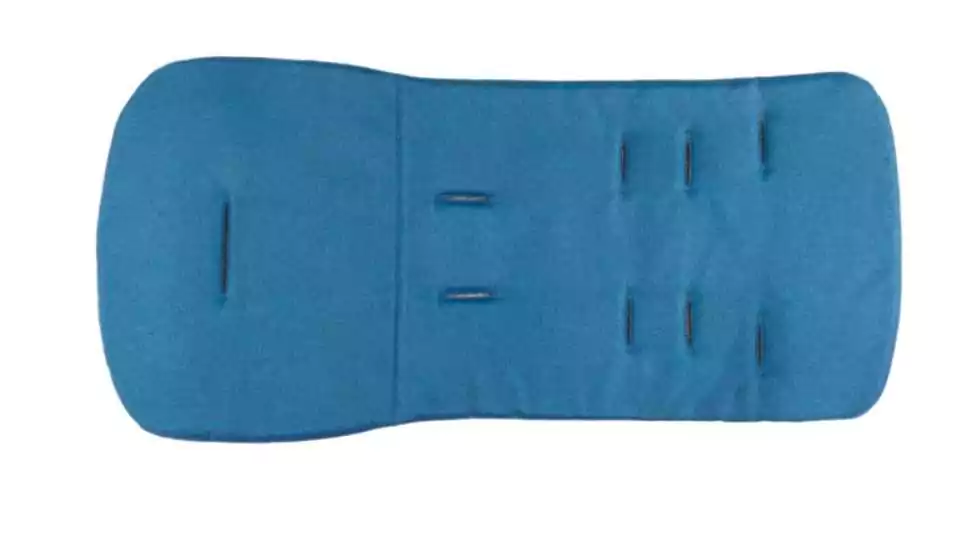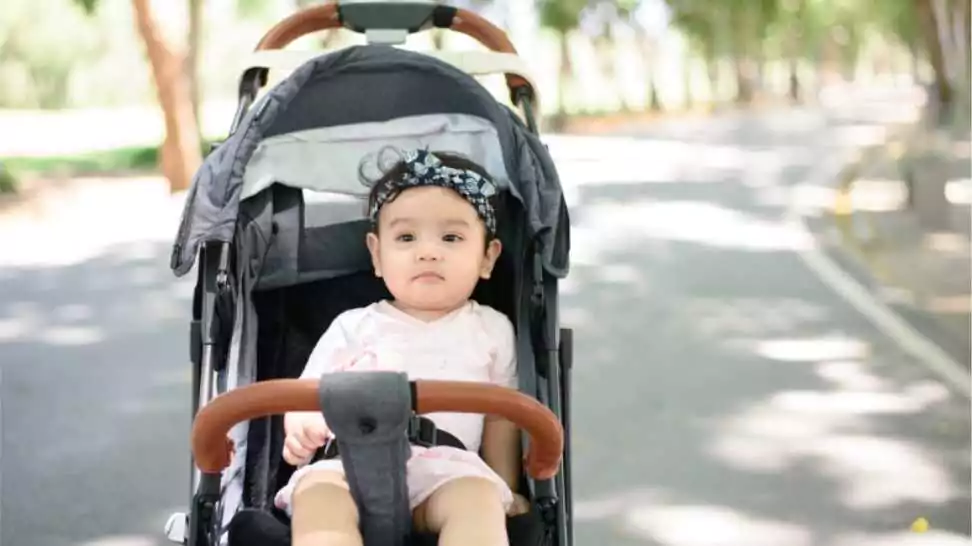The First Ride: When Can Baby Sit In Stroller?

Parenthood is a journey of immense joy and challenges, marked by key milestones in your child’s development. One pivotal decision for new parents is determining the right time for their baby to start sitting in a stroller. This choice extends beyond mere convenience; it intertwines with your baby’s physical and cognitive milestones.
Understanding when to introduce such experiences is crucial for aligning your child’s development with their exploration of the world. This blog provides insights into when can baby sit in stroller and have it’s first ride, highlighting the signs of readiness and aligning them with developmental milestones for a safe and joyful journey.
1 Understanding Baby's Physical Development
The journey of a baby’s physical development in the first year is nothing short of miraculous. From a tiny, dependent newborn to an active, curious infant, the transformation is profound. Understanding these key physical milestones is crucial in gauging when your baby might be ready to sit in a stroller.
0-6 Months: Building the Foundations
In the first six months, a baby’s physical development is primarily about building strength and coordination. Initially, infants have limited control over their movements. Gradually, they begin to develop stronger neck muscles, which is crucial for head control. This development is vital, as a baby needs to hold their head up independently before sitting in a stroller.
- Birth to 3 Months: The focus is on developing neck strength. Babies start lifting their heads while on their stomachs, a precursor to sitting up.
- 4 to 6 Months: This period marks significant advancements. Babies start rolling over, a key milestone indicating growing muscle strength and coordination.
6-12 Months: Gearing Up for Major Milestones
The second half of the first year is when the magic happens in terms of sitting up and other major physical milestones.
- 6 to 9 Months: Around this age, many babies begin to sit without support. Their back and neck muscles are strong enough to hold them upright. This is the time when introducing a stroller becomes a more viable option.
- 9 to 12 Months: Babies become more active and start to explore crawling and standing. This increased physical activity further strengthens their core muscles, making them more comfortable and safer sitting in a stroller for longer periods.
Expert Insights on Physical Development and Sitting Ability
Paediatric experts emphasise that while age is a good general guideline, the readiness for sitting in a stroller should be based on physical milestones rather than age alone. Each baby develops at their own pace, and observing their progress is crucial.
For instance, a baby who can sit up unassisted for extended periods is likely ready for the stroller experience. This ability indicates adequate muscle strength and balance. Additionally, being able to transition from lying down to sitting up is another sign that your baby might be ready.

2 Types of Strollers and Age Appropriateness
Navigating the world of baby strollers can be overwhelming, with an array of options available, each designed to cater to different needs and stages of a baby’s growth. Understanding the types of strollers and their age appropriateness is key to making an informed decision for your baby’s comfort and safety.
Types of Strollers
Bassinet Strollers: Ideal for newborns and young infants who can’t sit up unassisted. These strollers feature a flat, enclosed sleeping area, providing a safe and comfortable space for babies in their earliest months.
Standard Strollers: Versatile and designed to grow with your child, standard strollers are suitable from birth to toddler years. They often come with a reclining seat that adjusts as your baby grows, making them a practical choice for parents looking for longevity.
Jogging Strollers: Designed for active parents who want to take their baby along on runs. These strollers have three large, air-filled tires for smooth movement and are best suited for older infants (around 6 months and up) who have developed enough neck and head control.
Age Appropriateness for Different Strollers
- Newborn to 6 Months: Bassinet strollers are recommended for this age group, as they allow the baby to lie flat, which is crucial for spinal development and respiratory health.
- 6 Months and Up: Once the baby has developed sufficient neck and back strength, transitioning to a standard stroller is appropriate. These strollers can adapt to a baby’s growing needs, offering different reclining positions for sitting and sleeping.
- Post 6 Months (for Jogging Strollers): It’s advisable to wait until the baby has strong and consistent head and neck control before using a jogging stroller. This typically occurs around the 6-month mark, but it’s always best to consult with a paediatrician.
Safety Features to Look for in a Stroller
Safety should always be the top priority when selecting a stroller. Here are some essential safety features to consider:
- Five-Point Harness: This is a must-have feature, as it securely holds your baby at the shoulders, waist, and between the legs, ensuring they stay safely in place.
- Brakes: Effective and easy-to-use brakes are crucial for keeping the stroller stationary when needed.
- Sturdy Frame and Suspension: A strong frame and good suspension system provide stability and smooth rides, essential for both baby’s comfort and safety.
- Canopy: A canopy protects your baby from the sun and wind, making their strolling experience more comfortable.
- Adjustable Seat Recline: This feature allows the stroller to grow with your child, ensuring that they are always seated or lying in a safe and comfortable position.
3 Signs Your Baby is Ready to Sit in a Stroller
As a parent, it’s natural to look forward to each new stage in your baby’s development. One of these stages includes the transition to sitting in a stroller. However, it’s important to recognize the signs that your baby is truly ready for this step. Rushing this milestone can be uncomfortable and even unsafe for your baby.
Key Signs Indicating Readiness
Strong Head Control: One of the first signs is the ability to hold their head up steadily without support. This skill typically develops around 4-6 months of age and is crucial for sitting up in a stroller safely.
Sitting Without Support: If your baby can sit upright without assistance for extended periods (usually around 6-9 months), it’s a strong indicator that they are ready. This ability demonstrates sufficient core strength and balance.
Interest in Sitting Up: A baby who shows an eagerness to sit up and look around is expressing a natural curiosity and readiness to explore the world from a new vantage point.
No Discomfort in Sitting Positions: Observe if your baby seems comfortable and happy while sitting. Discomfort or fussiness could indicate that they are not quite ready.
The Importance of Not Rushing This Milestone
Rushing into sitting in a stroller can lead to physical discomfort and potential safety risks for your baby. It’s important to remember that each child develops at their own pace, and there’s no set ‘deadline’ for achieving this milestone. Patience is key.
Advice from Paediatricians
Paediatricians universally agree that developmental milestones should guide your decisions regarding stroller use. They advise against setting rigid timelines and instead encourage parents to observe and respond to their baby’s cues. If in doubt, consulting with your paediatrician is always a good idea. They can provide personalised advice based on your baby’s specific development and needs.

4 Transitioning to the Stroller
Transitioning your baby to a stroller is a significant step in their development and exploration of the world. To ensure this transition is as smooth and comfortable as possible for both you and your baby, there are several tips and best practices to keep in mind.
Tips for a Smooth and Comfortable Transition
- Start with Short Durations: Begin with short stroller sessions to allow your baby to get accustomed to the new experience. Gradually increase the time as they show signs of comfort.
- Familiarise Your Baby with the Stroller: Let your baby explore the stroller while it’s stationary. Familiarity can make the transition easier.
- Choose the Right Time: It’s best to try the stroller when your baby is well-rested and content. Avoid times when they might be hungry or tired.
- Stay Close and Reassuring: Your presence is comforting. Talk to your baby and maintain eye contact to reassure them as they experience the stroller.
Safely Positioning Your Baby in the Stroller
- Ensure the stroller’s backrest is in a slightly reclined position initially, especially for younger babies who are just starting to sit up.
- Use the harness correctly – the five-point harness is the safest, securing your baby at the shoulders, waist, and between the legs.
- Check that there’s no slumping. Your baby’s back should be supported, and their head should be upright.
Using Stroller Accessories Like Head Supports and Cushions

- Head Supports: For younger infants, especially those just transitioning to sitting in a stroller, head supports can be essential for providing additional stability. They help keep the baby’s head from slumping and support a comfortable, safe posture.
- Cushions and Padding: Additional cushioning can provide comfort and support. It’s especially useful in larger strollers where your baby might need extra help to sit snugly and securely.
- Weather Shields and Sun Canopies: Use these accessories as needed to protect your baby from the elements. Sun canopies are great for sunny days, while weather shields can be useful for rainy or windy conditions.
5 Safety and Comfort Considerations
Ensuring the safety and comfort of your baby while using a stroller is paramount. This section provides essential tips and recommendations to keep your little one secure and comfortable during stroller outings.
Essential Safety Tips While Using a Stroller
- Always Use the Harness: Even if you’re going for a short stroll, always secure your baby with the stroller’s harness to prevent falls or slipping.
- Keep an Eye on Your Baby: Regularly check on your baby to ensure they are comfortable and safe, especially in varying weather conditions.
- Be Cautious with Stroller Accessories: While accessories can enhance comfort, ensure they are properly secured and do not pose a suffocation or entrapment hazard.
- Never Leave the Stroller Unattended: Even if the stroller has a brake, it’s crucial never to leave your baby unattended in the stroller.
- Be Mindful of the Stroller’s Weight Limit and Design: Overloading the stroller with bags or additional items can make it unstable.
Ensuring Your Baby’s Comfort in the Stroller

- Proper Reclining Position: Adjust the seat recline according to your baby’s age and activity. Younger babies need more reclining for support, while older babies may prefer sitting up to explore their surroundings.
- Use Weather-Appropriate Accessories: On sunny days, a stroller canopy is essential to protect your baby from direct sunlight. In colder weather, a warm blanket and footmuff can keep your baby cosy.
- Regular Breaks and Adjustments: For longer outings, take breaks to allow your baby to stretch and change positions, which can help prevent fussiness and discomfort.
Recommendations for Stroller-Friendly Clothing and Accessories

- Clothing: Opt for comfortable, breathable fabrics that suit the weather. Avoid overly bulky clothes that might make it difficult for your baby to move freely in the harness.
- Footmuffs and Blankets: A footmuff is great for cold weather, providing warmth without the bulkiness of heavy coats. Light blankets are useful for mild weather and can be easily adjusted.
- Sun Hats and Sunglasses: In sunny conditions, a sun hat and baby sunglasses can provide extra protection.
- Stroller Toys: Soft, safely secured toys can keep your baby entertained and engaged during stroller rides.
6 When to Upgrade to a Different Stroller?
As your baby grows and your family’s needs evolve, there may come a time when you need to upgrade to a different type of stroller. Knowing when to make this transition and what factors to consider can ensure a seamless and effective change.
Guidelines for Knowing When to Switch
Baby’s Growth: Outgrowing the stroller is one of the most obvious signs. If your baby seems cramped, or if their feet dangle excessively, it might be time for a bigger stroller.
Changing Needs: As your baby becomes more active and curious, a stroller that offers more viewing opportunities and interaction with the environment might be necessary.
Wear and Tear: If your current stroller is showing signs of significant wear or doesn’t function as smoothly, consider upgrading for safety and comfort reasons.
Lifestyle Changes: If your lifestyle or daily activities have changed – for example, if you’re going out for more walks or jogs – a stroller that matches these activities would be ideal.
Factors to Consider for the Next Stroller
- Baby’s Weight and Height: Ensure the new stroller can accommodate your baby’s current size and has room for growth. Check the weight and height limits of the stroller.
- Lifestyle Needs: If you travel often, a lightweight, compact stroller might be ideal. For jogging or off-road adventures, a jogging stroller with sturdy wheels and suspension would be better.
- Comfort Features: Look for adjustable features like reclining seats, adjustable footrests, and canopies for comfort in different situations.
- Manoeuvrability and Storage: Consider how easy the stroller is to push, turn, and store. This is especially important if you use the stroller frequently or have limited storage space.
- Durability and Safety: A stroller that’s built to last and has robust safety features, such as a five-point harness and effective brakes, is essential.
- Additional Features: Think about extra features that might be useful, like cup holders, storage baskets, and weather shields.
7 Wrapping Up
As you navigate the various stages of your baby’s development, remember that parental instincts, coupled with expert advice, are invaluable. Trusting your judgement and consulting with paediatricians when in doubt can provide guidance and reassurance. Embrace each moment, cherish the growth, and enjoy the adventure of parenting. Your love and care are the best gifts you can offer to your little one as they explore the world, one stroller ride at a time.
Community Q&A
About This Article
This article has been viewed 106 times.



